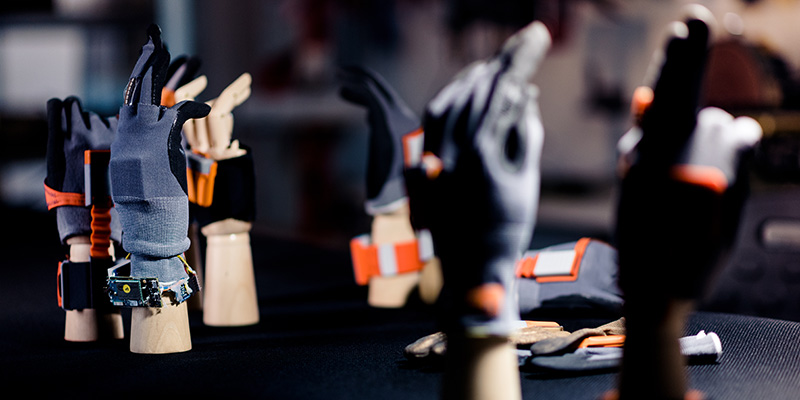AWS Startups Blog
Can robots and humans work together? ProGlove CTO Valentin Sawadski Says Yes.
 Sometimes tech advancements and our burgeoning robotic future can be scary. Will robots replace the human worker? According to Valentin Sawadski, the CTO at ProGlove, a leader in the tech wearables industry, there is no need for human workers to fear the robot. In fact, robots and humans can work together to increase productivity, and help usher in the future of warehouses and manufacturing.
Sometimes tech advancements and our burgeoning robotic future can be scary. Will robots replace the human worker? According to Valentin Sawadski, the CTO at ProGlove, a leader in the tech wearables industry, there is no need for human workers to fear the robot. In fact, robots and humans can work together to increase productivity, and help usher in the future of warehouses and manufacturing.
Take Mark, ProGlove’s first product. Mark is a scanning unit integrated into a wearable glove that connects workers on an assembly staff with management to help increase productivity. “Mark is solving a big problem for the industry,” Sawadski explained. “People in warehouses and shop floors always strive to be more efficient. They want to have more quality, more ergonomic workplaces, and the tool they use most is […] a big, bulky barcode scanner.”
That’s where Mark comes in. Mark eliminates the need for the barcode scanner and frees up the hands of the worker, all while reporting back to management about what’s happening on the floor.
“The glove is not only a barcode scanner. It can also give feedback to the worker. For example, it’s pretty easy to miss a detail and then pick the wrong product. With ProGlove, you can scan these products and then [….] you as a worker can get feedback right away on what you are doing.”
Mark is the first ever “smart glove” for the industry and, by Sawadski’s estimation, is a jump-off point for ProGlove to continue finding new ways to connect workers with tech.
“Our goal is to connect the human worker to the industry 4.0, the Internet of Things,” says Sawadski.
ProGlove’s philosophy is simple: to provide the worker and management valuable analytics that will help them do their job better. In ProGlove’s mind, human workers and robotic assistants can play off each other’s strengths to achieve this goal and hit maximum productivity.
“Robots and automation technology has many advantages, but the human worker also has many advantages,” Sawadski says. “The human worker is still much, much easier and better at learning new stuff than a robot is.”
So what’s next for ProGlove? Will we be seeing ProSuits, ProHats, or ProShoes in our future?
According to Sawadski, “Potentially yes, but we believe that the hands are the most important tools of the worker. If you just see how much value you create with your hands, with what human hands are capable of doing, that is just what we want to focus on.”
With human brainpower paired with technological advancements being aided by innovative companies like ProGlove, there’s no telling what the future may hold for the average worker.